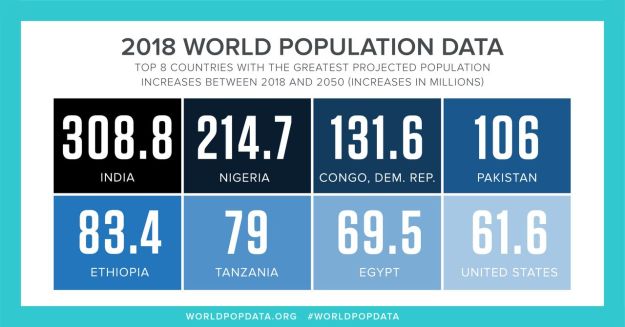20.2: Introduction to Demography and Population Growth
- Page ID
- 60324
What you’ll learn to do: describe demographic measurements, read population graphs, and describe demographic theories

Scholars understand demography through various analyses—Malthusian theory, Zero population growth, cornucopian theory, and demographic transition theory all help sociologists study demography. The earth’s human population has doubled in the past 43 years, especially in peripheral countries, and some are concerned that we will not have enough food and other resources to sustain the expanding population. Factors that impact population include birthrates, mortality rates, and migration, this last a term that includes immigration (entering a country to live permanently) and emigration (leaving a country). There are numerous potential outcomes of the growing population, and sociological perspectives vary in their findings regarding the potential effect of these increased numbers. From any point of view, it seems clear that the growth will put additional pressure the already taxed planet and its finite natural resources.
- Introduction to Demography and Population Growth. Provided by: Lumen Learning. License: CC BY: Attribution
- Demography and Population. Authored by: OpenStax CNX. Located at: https://cnx.org/contents/AgQDEnLI@10.1:LPE0-fiO@3/Demography-and-Population. License: CC BY: Attribution. License Terms: Download for free at http://cnx.org/contents/02040312-72c...9333f3e1d@3.49
- World Population Data image. Authored by: Kaneda Oshiko, Charlotte Green, and Kaitlyn Patierno . Provided by: Population Reference Bureau. Located at: https://www.prb.org/2018-world-population-data-sheet-with-focus-on-changing-age-structures/. Project: PRB Projects 2.3 Billion More People Living on Earth by 2050. License: All Rights Reserved


